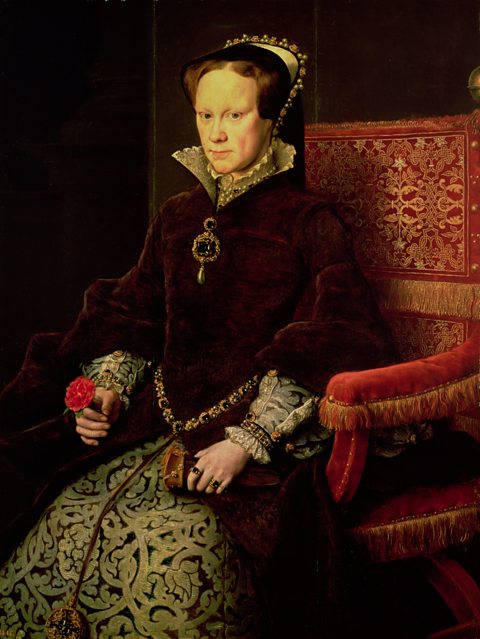The impact of religious change in the 16th century
Religious change was a significant cause of crime in the 16th century. Failure to follow and swear allegiance to the changes each monarch made to religion was a crime. Many people were punished for heresy To disagree with, or refuse to follow the religious views of the monarch or the state. in this period.
People who opposed the religious changes sometimes refused to follow the new practices, spoke out publicly against the changes, or organised rebellions or conspiracies against the monarchy. These actions were crimes in Tudor times.
The Protestant ReformationThe changes to Christianity, led by Martin Luther, that challenged the authority of the Catholic Church in the 16th century. led to the monarchy, government and Parliament becoming more involved in religious matters. This meant that often someone who committed the crime of heresy was also committing treasonThe crime of betraying one's country, sovereign or government.
Causes of heresy and treason under Henry VIII
The 16th century saw the start of the Protestant Reformation in Europe. Protestant ideas began to spread to England and Wales in the 1520s, influencing many people. However, it was Henry VIIIтs divorce crisis (beginning in 1529) that was the catalyst for the start of the Protestant Reformation in England and Wales.
A series of laws were passed that separated the Church in England from the Catholic Church. Henry VIII became Head of the Church of England and Wales instead of the Pope. Those who refused to accept Henryтs authority over the Church were punished, many by execution.
Heresy and treason therefore became more common crimes under Henry VIII in the 1530s and 1540s, because anyone who did not follow and support these changes was committing a crime. Many people were burned for heresy or executed for treason during Henryтs reign.
In 1536, 30,000 people protested against Henryтs changes in a rebellion known as the Pilgrimage of Grace and took control of York, Hull, Pontefract and Doncaster. Following these events, 178 protestors were executed, including the protestтs leader, Robert Aske.
Causes of religious crime under Edward VI and Mary I (Mary Tudor)
After Henry VIIIтs death in 1547, his son, Edward VI, became king. Edward had been brought up as a Protestant so he introduced changes to remove all elements of Catholicism from worship in England and Wales. Catholic bishops who refused to follow Edwardтs changes were imprisoned for heresy, but there were only two executions for heresy under Edward.

Mary Tudor, a Catholic, came to the throne in 1553. She quickly reversed all of Edwardтs religious changes. Mary restored the rule of the Pope and brought Catholic practices back to the Church.
People who refused to accept Maryтs changes were guilty of heresy, and leading Protestant bishops were tried for this crime. Under Maryтs rule, 283 people who refused to recantTo say that you no longer hold a certain belief, opinion or view. This is often done in a formal or public manner. their views were burned at the stake. One of the most famous executions of Protestant martyrs took place in Oxford in 1556 when Thomas Cranmer, Archbishop of Canterbury, was executed. Two other Protestant bishops, Hugh Latimer and Christopher Ridley, were also executed.
In 1554, Thomas Wyatt and 90 other Protestant rebels were executed for treason after their failed plot to overthrow Mary and replace her with her sister Elizabeth, a Protestant.
Causes of religious crime under Elizabeth I
Elizabeth I came to the throne in 1558. She created a religious settlement based on a return to moderate Protestantism. This compromise made her Supreme Governor of the Church but left enough Catholic elements to keep the majority of her subjects happy.
However, some Catholics were deeply unhappy about Elizabethтs religious settlement. Cardinal William Allen refused to take the Oath of Supremacy, to swear that he would accept Elizabeth as Supreme Governor of the Church, and he fled to Rome. Throughout Elizabethтs reign, Catholic priests were trained abroad and returned to England to try to convert people. Catholic preachers who continued to preach were committing a crime and were punished if caught.